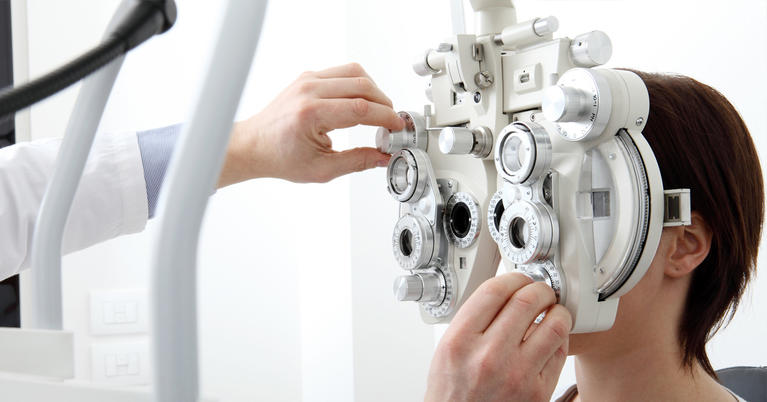Neurologist in Andalusia: Leading Specialists and Clinics Detailed
Neurologist in Andalusia: Leading Specialists and Clinics Detailed
Blog Article
The Benefits And Drawbacks of Various Refractive Surgical Treatments for Improved Eyecare

LASIK Surgical Procedure
LASIK surgical treatment is a frequently done refractive procedure that aims to deal with vision concerns such as nearsightedness, farsightedness, and astigmatism. During the procedure, a thin flap is created on the cornea, and a laser is made use of to improve the underlying cells, remedying the refractive mistake.
One of the primary advantages of LASIK surgical treatment is the rapid enhancement in vision experienced by lots of clients. The majority of people observe a substantial enhancement in their sight shortly after the treatment, with minimal downtime required for healing. In addition, LASIK is recognized for its high success rate and low occurrence of difficulties when executed by competent specialists. Nevertheless, like any medical procedure, LASIK also lugs some dangers, including completely dry eyes, glare, halos, and under or overcorrection of vision. It is vital for individuals taking into consideration LASIK surgical procedure to undergo a complete analysis by an eye treatment specialist to establish if they appropriate prospects for the procedure.
PRK Treatment
The PRK treatment, likewise known as Photorefractive Keratectomy, is a type of refractive surgery that intends to fix vision concerns comparable to LASIK surgical procedure. Unlike LASIK, which entails developing a flap in the cornea, PRK functions on the surface area layer of the cornea.
One of the benefits of PRK over LASIK is that it gets rid of the threat of flap-related problems considering that no flap is created during the surgery. Regardless of the longer healing period, PRK can be an ideal option for people looking for vision correction surgical treatment.
SMILE Surgical Procedure
A cutting-edge refractive surgery technique acquiring popularity in the field of ophthalmology is SMILE Surgical procedure. Tiny Cut Lenticule Extraction (SMILE) is a minimally intrusive procedure that deals with vision by reshaping the cornea making use of a femtosecond laser. Unlike traditional LASIK surgical procedure, SMILE Surgery entails producing a little incision in the cornea to extract a lenticule, which leads to less interruption to the corneal structure and possibly quicker recuperation times.
One of the key advantages of SMILE Surgical procedure is its ability to treat nearsightedness (nearsightedness) and astigmatism with high accuracy, bring about outstanding aesthetic outcomes for individuals. The minimally intrusive nature of the procedure likewise lowers the risk of problems such as completely dry eye syndrome, making it a positive alternative for individuals looking for refractive surgical treatment.

LASEK Strategy
Having actually explored the benefits and considerations of SMILE Surgical procedure, another noteworthy refractive surgical treatment strategy worth examining is the LASEK Method. LASEK, which represents Laser-Assisted Subepithelial Keratectomy, is a kind of laser eye surgery that aims to correct refractive mistakes such as nearsightedness (nearsightedness), hyperopia (farsightedness), and astigmatism.
Unlike LASIK, LASEK does not entail producing a corneal flap. Instead, during a LASEK procedure, the surgeon uses a watered down alcohol solution to loosen the thin external layer of the cornea, understood as the epithelium.
One of the primary benefits of LASEK is that it can be appropriate for people with thin corneas who might not be great candidates for LASIK. Additionally, LASEK normally results in marginal post-operative pain and a quicker recuperation time compared to PRK. Nonetheless, the visual recovery procedure with LASEK may be slightly longer than with LASIK.
Implantable Get In Touch With Lenses
Implantable Get in touch with Lenses provide a long-term vision modification service for people seeking a choice to conventional get in touch with lenses or glasses. These lenses, also called phakic intraocular lenses, are surgically placed right into the eye to deal with refractive mistakes such as myopia (nearsightedness), hyperopia (farsightedness), and astigmatism. eye doctors in view it andalusia. Unlike typical call lenses that rest on the surface of the eye, implantable get in touch with lenses work within the eye itself, giving clear vision without the requirement for day-to-day maintenance or elimination
Among the vital advantages of implantable call lenses is their permanence. When placed, they can remain in the eye forever, providing consistent and stable vision adjustment. Furthermore, these lenses can be an exceptional alternative for individuals who are not great candidates for laser eye surgery or that choose a reversible vision correction procedure.
However, implantable call lenses do lug some risks, consisting of the potential for cataracts or increased eye pressure. It is important for people considering this alternative to seek advice from an eye treatment expert to determine if implantable contact lenses are the right option for their certain needs and eye health and wellness.
Verdict
In verdict, each type of refractive surgery has its own advantages and drawbacks. LASIK surgical treatment is popular for its quick recovery time, while PRK treatment may appropriate for patients with thin corneas. Go Here SMILE surgery offers marginal pain during the treatment, but LASEK technique may have a longer healing procedure. Implantable call lenses give an option for those that are not ideal prospects for typical surgical treatments. Individuals must seek advice from their eye care service provider to establish the most effective option for their specific requirements.

In General, SMILE Surgery provides an appealing option for people looking to enhance their vision through refractive surgical procedure.
Report this page